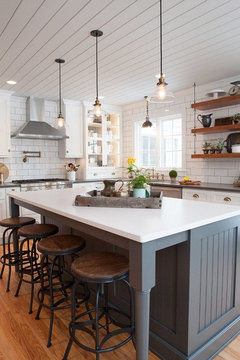Top Quality Kitchen Island Legs for a Sturdy Island Base
Top Quality Kitchen Island Legs for a Sturdy Island Base
Blog Article
Vital Tips for Selecting the Perfect Table for Your Kitchen Area
Picking the ideal eating table for your cooking area is even more than simply an issue of taste; it requires a thorough understanding of your area and needs. The form of the table plays a pivotal duty; while rectangular tables match larger areas, round ones foster affection, and extendable choices offer versatility. The table must integrate with your kitchen's aesthetics and fit your household conveniently.
Measure Your Area
Selecting the ideal table begins with a careful assessment of your readily available room. This foundational action makes certain that the table not only fits comfortably within the room but also enhances the general layout and functionality of your eating area. Begin by measuring the measurements of the space, thinking about doorways, windows, and any existing furniture. This will certainly aid you establish the optimum allowable dimension for your table.
It is necessary to leave sufficient space for chairs to be pulled out and for individuals to move around the table without obstruction. A basic guideline of thumb is to allow at least 36 inches of clearance from the side of the table to the local wall or item of furniture.
In addition, assume about the variety of people you generally amuse and whether you need added room for guests. Choosing for an extendable table can provide versatility, enabling you to accommodate differing varieties of diners. By precisely gauging your space, you prepared for choosing a table that improves both the visual appeals and functionality of your eating area.
Choose the Right Forming

On the other hand, round tables are exceptional for smaller sized kitchens or intimate events, as they advertise conversation by enabling every person to face each other. They additionally provide a sense of comfort and can fit well in tighter rooms due to their lack of sharp corners. Oblong tables use the most effective of both globes, incorporating the size of rectangular tables with the affection of round ones, making them versatile for different setups.
Square tables are one more choice, especially fit for square-shaped spaces. They create a modern and symmetrical appearance, cultivating an equivalent eating experience for all seated.
Material Considerations
When picking an eating table, material factors to consider are vital in identifying the table's resilience, upkeep requirements, and overall visual. Wood is a timeless option, offering classic appeal and effectiveness.
Glass-topped tables supply a modern, streamlined look and can make a space appear bigger due to their openness. They require constant cleaning to stop smudges and finger prints. In addition, tempered glass is recommended for its added strength and safety.

Finally, composite materials like MDF (Medium-Density Fiber board) or plywood are affordable alternatives. These products can imitate the look of solid wood however may not supply the exact same longevity. They are usually less complicated to clean yet can be prone to water damage otherwise correctly secured.
Eventually, the choice of product should straighten with your kitchen area's style, your way of life needs, and your budget plan constraints. (kitchen island legs)
Seats Capacity and Convenience
Exactly how do you determine the ideal seats capability and convenience for your table? This critical step involves examining both the physical room offered in your cooking area and your home's useful needs. Begin by gauging your kitchen area to guarantee the table fits pleasantly, enabling a minimum of 36 inches of clearance around it for easy activity. Consider the variety of individuals that generally eat with each other, as this will affect the table dimension. For a household of 4, a rectangular table of 48 inches long or a round table with a 48-inch size is generally sufficient.
The elevation of the table must preferably be around 30 inches, supplying a balanced ergonomic stance for seated diners. Chairs should have a seat elevation useful site of 18 to 20 inches to make certain a comfy eating position.
Style and Looks
Choosing a table that fits your style and visual appeal involves stabilizing individual preference with the existing design of your dining room. The table is commonly read the article the centerpiece of the kitchen area, and its style ought to complement the overall motif of the area. Whether your cooking area flaunts a modern, minimal appearance or a rustic, farmhouse beauty, the table you select ought to harmonize with these elements to develop a natural and inviting ambience.
Think about materials carefully; timber uses a timeless appeal and can vary from rich mahogany for a traditional look to lighter oak for a contemporary feeling. Steel and glass tables, on the other hand, can present a streamlined, industrial side to your kitchen area. Do not ignore the table's shape-- rectangular tables are traditional and flexible, while round and oval alternatives can promote a more intimate eating experience.
Furthermore, pay very close attention to Read More Here information and surfaces. A troubled surface could add personality and heat, whereas a glossy surface area can add to a tidy, contemporary aesthetic. Ultimately, your eating table ought to not just fit flawlessly right into your kitchen area's layout however additionally show your individual style, raising the area both functionally and aesthetically.
Conclusion
In final thought, choosing the optimal eating table for a cooking area demands mindful analysis of room, form, product, seating ability, and aesthetic harmony. Ultimately, a well-chosen dining table fosters an inviting ambience and suits the house comfortably, therefore enhancing the eating experience.

When selecting an eating table, product factors to consider are paramount in identifying the table's longevity, maintenance needs, and general aesthetic. For a household of 4, a rectangle-shaped table of 48 inches long or a round table with a 48-inch diameter is typically adequate.
Do not forget the table's shape-- rectangular tables are traditional and flexible, while round and oblong alternatives can cultivate an extra intimate eating experience. kitchen island legs.
Report this page